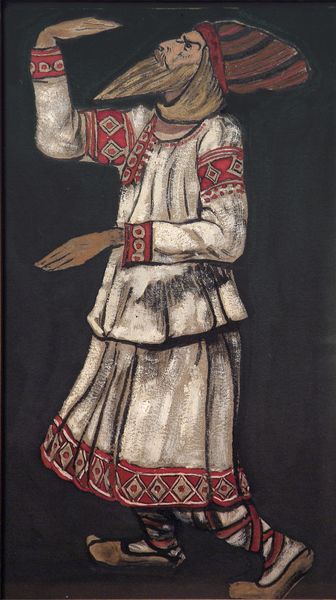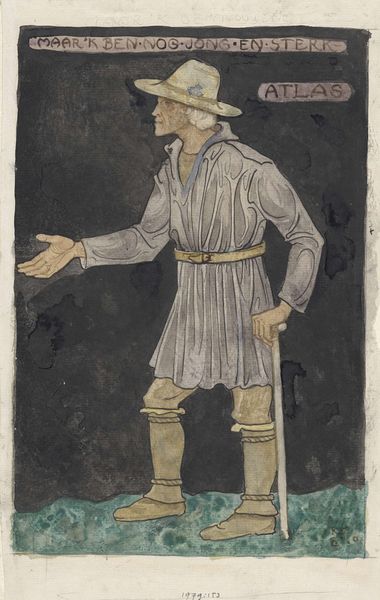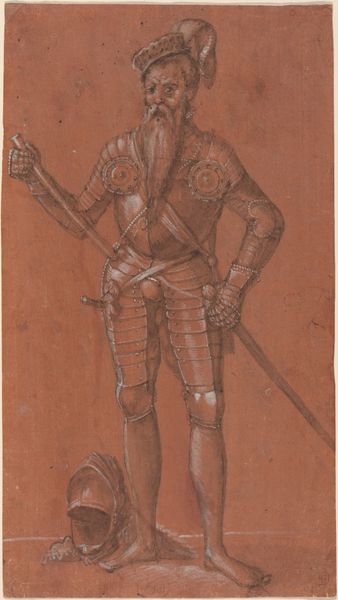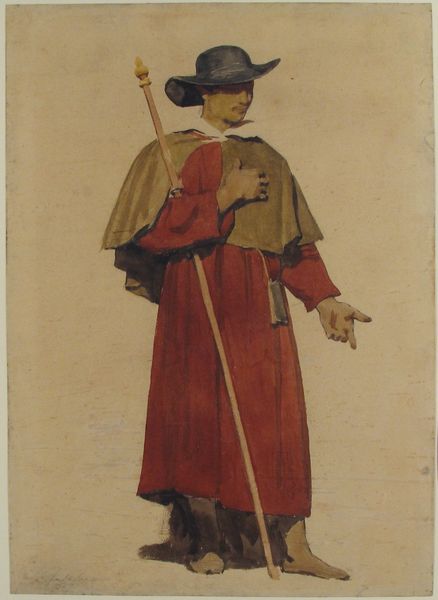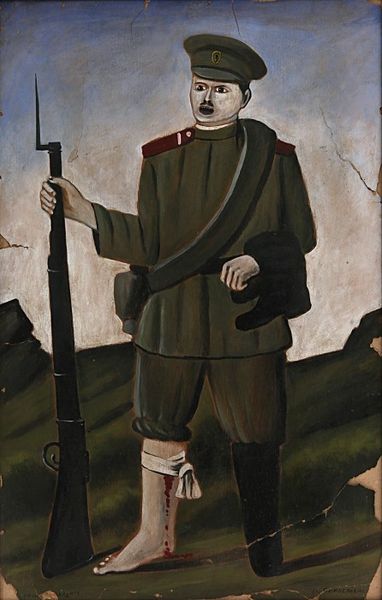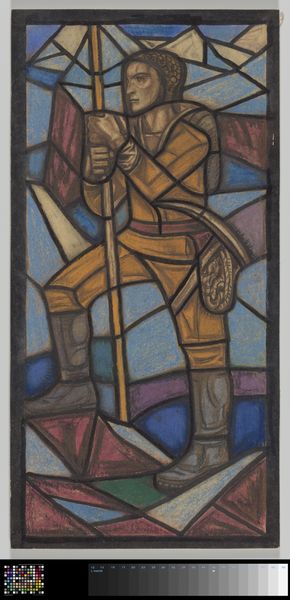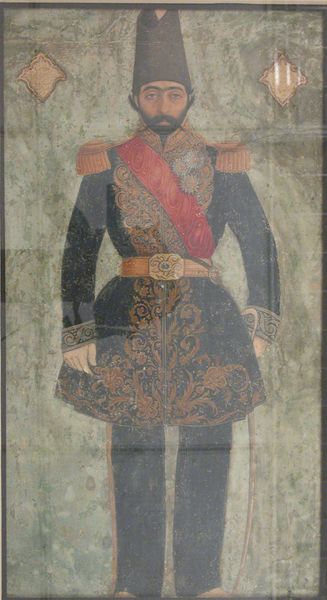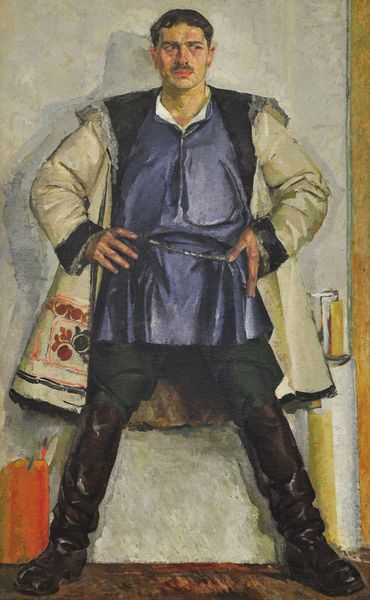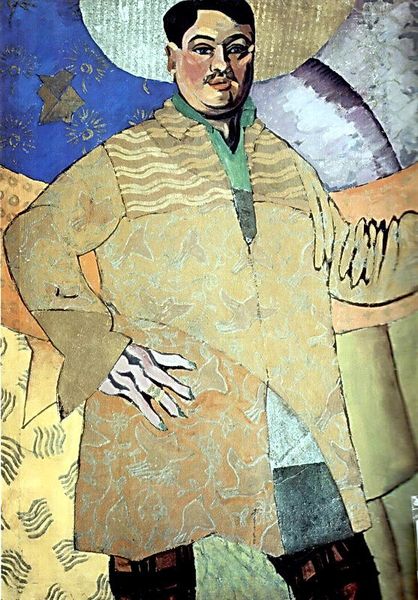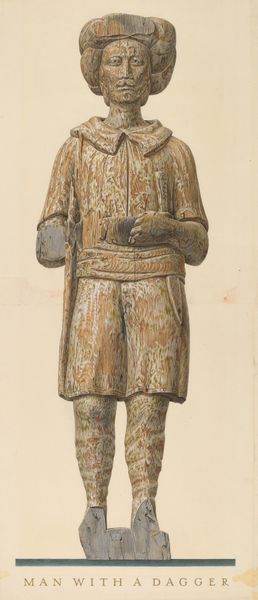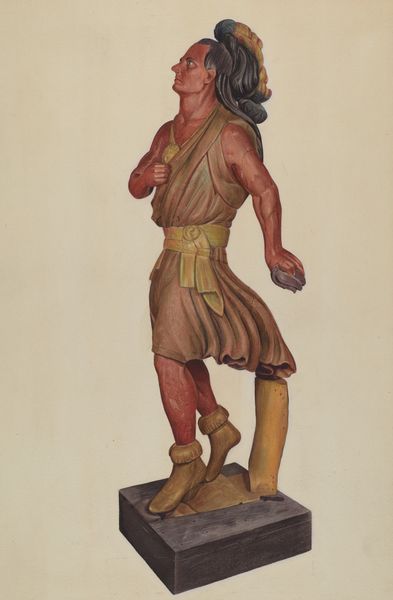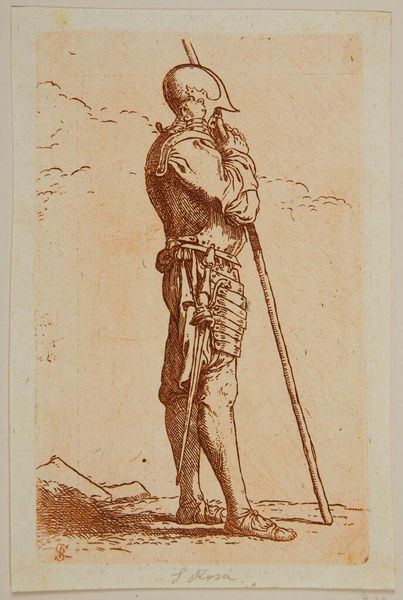
Dimensions: 331.5 x 125.7 cm
Copyright: Public domain
Editor: We’re looking at Ferdinand Hodler’s “The Halberdier” from 1895, rendered in oil paint. There's something unsettling about the figure’s almost childlike quality and his imposing weapon. How do you interpret this work within its historical context? Curator: The unsettling feeling you describe is key. Hodler painted this at a time of rising nationalism and debates around Swiss identity. Consider how he presents this historical figure. The halberdier, traditionally a symbol of Swiss military prowess and independence, is rendered here with an almost unsettling androgyny. He isn't idealized or heroic in the classical sense. Editor: I see what you mean. His expression is blank, almost defiant, which subverts the typical heroic representation. What could Hodler be trying to communicate about Swiss identity through this non-traditional depiction? Curator: Exactly. We must remember Hodler's engagement with Symbolism and its departure from realism. Think about the socio-political backdrop: Switzerland was striving for a neutral, yet distinct, identity amidst powerful European empires. Perhaps this halberdier embodies the internal tensions within that national project – the struggle to reconcile tradition with modernity, strength with vulnerability. Do you notice anything in his stance? Editor: He appears confident, almost confrontational. The way he casually rests his hand on his hip, while brandishing this huge weapon seems to project a sense of ambiguous power and defiance. Curator: Precisely! That defiance speaks to me of a negotiation, where the work refuses easy answers. Is Hodler celebrating or questioning traditional symbols of Swiss masculinity and power? The painting pushes us to question the narratives we inherit. Editor: I now appreciate how much more is packed in here, and I learned so much about considering those elements. I never would have come up with it. Curator: Thinking intersectionally enriches our understanding of these works and prompts new perspectives. It’s about constant re-evaluation, opening to nuances within broader cultural stories.
Comments
No comments
Be the first to comment and join the conversation on the ultimate creative platform.
